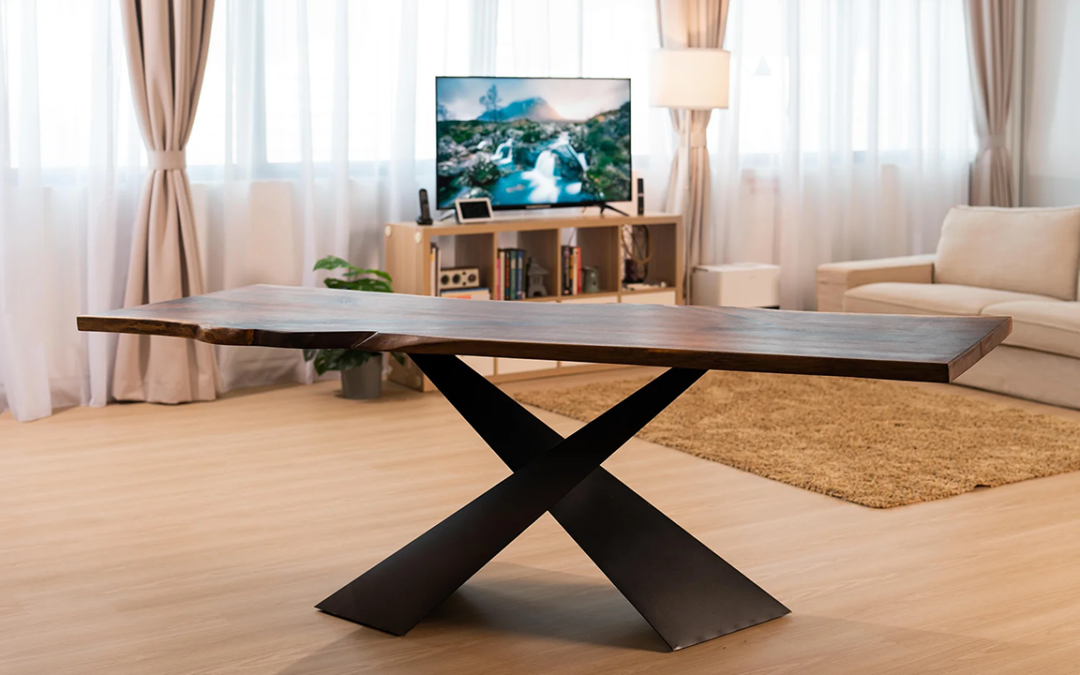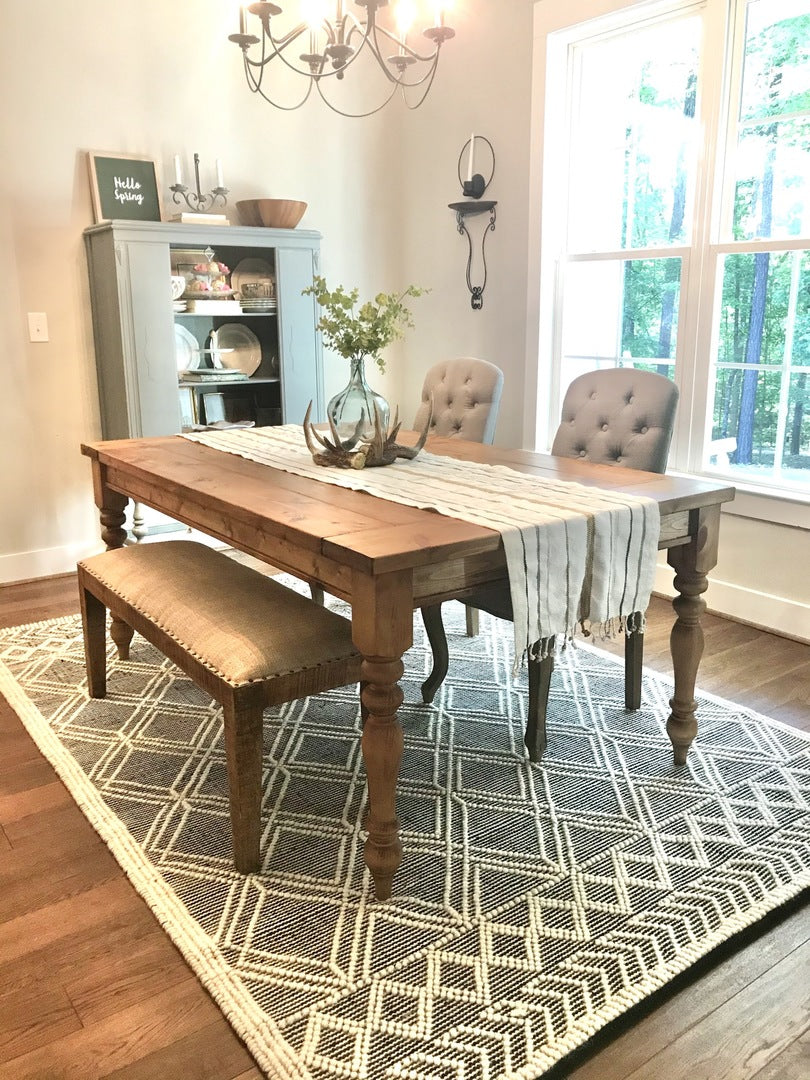Dining Room Table Legs: What to Consider Before You Acquire
Dining Room Table Legs: What to Consider Before You Acquire
Blog Article
A Detailed Appearance at Eating Table Leg Styles: Discovering the Suitable Match
Picking the ideal table leg style is critical for both aesthetic allure and functional performance. Traditional 4 legs supply ageless beauty and security, while the pedestal base offers enhanced legroom and a contemporary look. For those with bigger tables, trestle legs make sure durable assistance, whereas hairpin legs introduce a mid-century modern ambiance with their minimalist style. The x-shaped legs mix modern design with improved security. Each of these options brings one-of-a-kind benefits, making the selection a lot more than simply a matter of choice. Check out further to find which design completely complements your eating space and way of life.
Standard 4 Legs
Among the various sorts of dining table leg designs, the traditional four-leg design stays an ageless selection for many households. This timeless setup supplies a harmonious blend of functionality and looks, making it a seasonal favorite. Four legs provide balanced support, guaranteeing the table stays secure and efficient in bearing substantial weight. This is specifically useful for houses that regularly organize huge celebrations or use their table for several functions, such as work or crafting.
From a visual point of view, the conventional four-leg design can be easily adjusted to different interior designs. Whether crafted from timber, metal, or a combination of products, these legs can be elaborately carved, sleek and minimalistic, or anything in between. Their convenience enables them to complement both rustic and contemporary setups perfectly.
Moreover, the uncomplicated framework of the four-leg style helps with convenience of motion and placement within an area. Unlike more facility bases, this style decreases blockages, offering enough legroom for diners. In recap, the standard four-leg table leg design weds enduring elegance with sensible capability, making it a sharp selection for those seeking both type and function in their eating furniture.
Stand Base
Typically celebrated for its sophisticated and space-efficient layout, the pedestal base is a recognized alternative to the typical four-leg configuration in table leg styles. This distinct base usually includes a single main column sustaining the tabletop, which can vary in kind, from ornately carved timber to streamlined, contemporary steel. Among the primary advantages of the pedestal base is its capability to optimize legroom and seating flexibility. Without corner legs, restaurants are managed higher liberty of movement, making it a suitable choice for round and oval tables that promote even more intimate and comprehensive gatherings.
Moreover, the pedestal base's central support can take care of substantial weight, enabling the usage of larger table tops, such as marble or thick wood. This toughness paired with its visual flexibility makes the stand base a prominent selection in both typical and contemporary interior settings. It can seamlessly integrate with various layout motifs, from timeless style to minimal modernity. The central column itself offers a canvas for detailed styles and creative expressions, adding a component of aesthetic rate of interest below the table. In recap, the stand base integrates functionality snappy, making it an improved and functional option for varied eating atmospheres.
Trestle Legs
Trestle legs supply a robust and classic foundation for eating tables, defined by their straight cross-bracing and strong assistance light beams. Originating from middle ages times, this design has actually developed yet preserved its important structure, making it a perennial fave in both conventional and modern settings. The main trestle beam of light, commonly supported by 2 or more upright posts, uses phenomenal stability, permitting bigger table sizes check here without the requirement for extra legs.
A significant benefit of trestle leg tables is the ample legroom they provide. Unlike tables with 4 corner legs, the absence of blockages at the table's edges provides unobstructed room for chairs and diners, enhancing comfort and access. This makes trestle tables optimal for suiting larger gatherings, whether in a dining-room or a reception hall.
The aesthetic convenience of trestle legs is noteworthy. Available in a range of products such as timber, steel, and composite, they can be finished to complement a vast array of indoor designs. From rustic farmhouse to streamlined contemporary designs, trestle legs can be personalized to fit private preferences. Their long-lasting allure and useful benefits make trestle legs an engaging selection for those looking for both design and practicality in their table.
Barrette Legs

The allure of hairpin legs depends on their simpleness and flexibility - dining room table legs. Readily available in a variety of products, consisting of steel and brass, they can be finished in many shades to complement different interior designs. Whether paired with a rustic wooden table top or a modern glass surface area, hairpin legs effortlessly mix performance with a touch of classic beauty
Resilience is one more remarkable feature of hairpin legs. Despite basics their delicate look, these legs are crafted to birth significant weight, ensuring the table stays secure and safe and secure. Additionally, they are relatively simple to set up, making them a prominent option for do it yourself enthusiasts and expert furnishings makers alike.
X-Shaped Legs

Constructed from materials such as steel, wood, or a mix of both, X-shaped legs can be customized browse around here to match numerous design preferences. Steel legs typically offer a streamlined and commercial feel, ideal for loft-style houses and contemporary eating rooms.
In addition, the engineering behind X-shaped legs ensures even weight distribution, reducing the danger of wobbling and enhancing sturdiness. This makes them specifically fit for bigger eating tables that call for extra assistance. In significance, X-shaped legs mix sensible design with modern-day aesthetics, making them a timeless selection for varied eating settings.
Final Thought
A detailed understanding of table leg styles reveals the distinct characteristics and advantages of each layout. Typical 4 legs offer security and classic allure, while pedestal bases offer legroom and a streamlined appearance. Trestle legs ensure durable assistance for bigger tables, and barrette legs introduce a mid-century modern visual. X-shaped legs integrate contemporary design with boosted security. Selecting the suitable leg style makes certain both useful and aesthetic complete satisfaction in any eating area.
Report this page